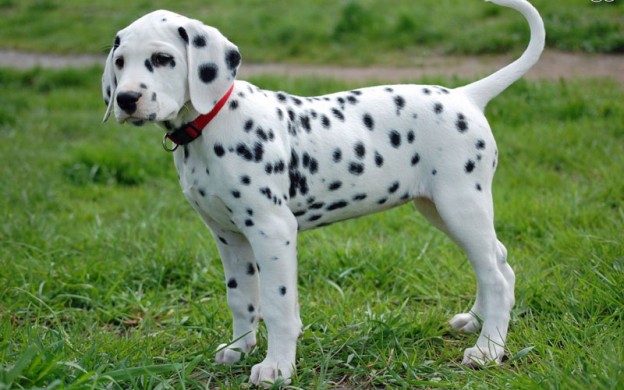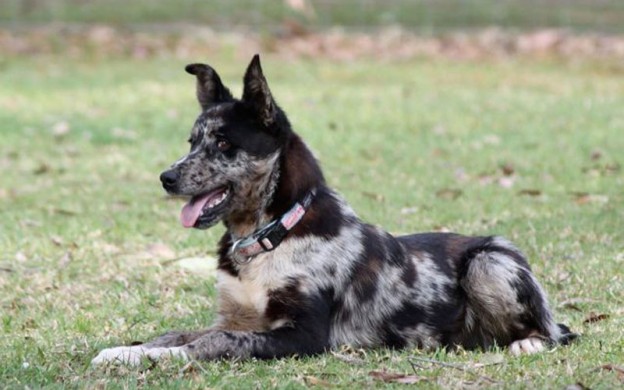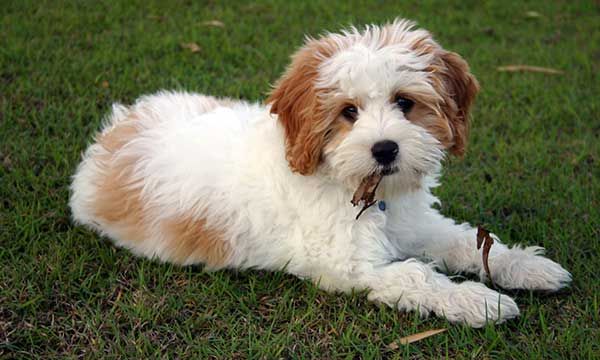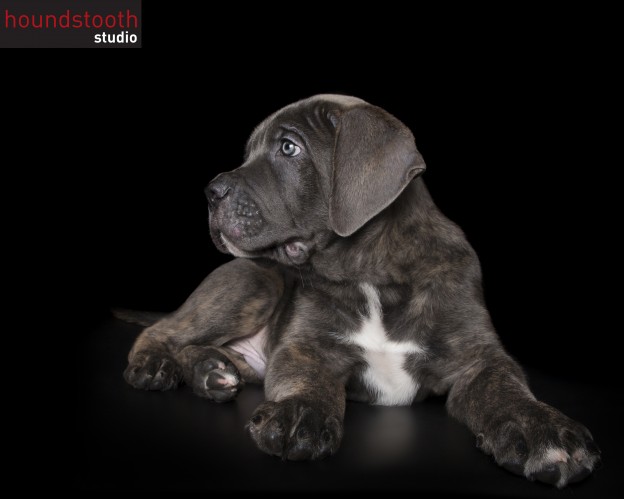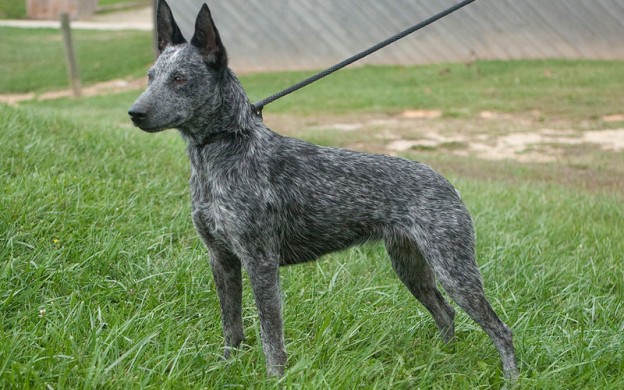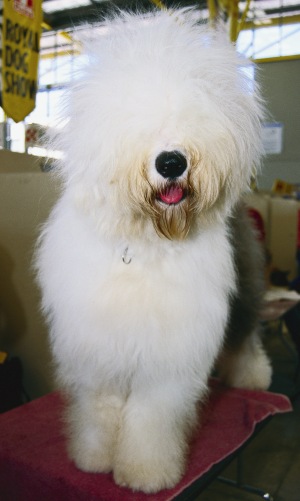
Facts
Watchdog qualities: OES are alert and protective but never aggressive. Their deep, resonant and unusual bark can be quite frightening and definitely a deterrent to anybody thinking of breaking into your home.
Personality: Old English Sheepdogs are fun-loving, boisterous, friendly, intelligent and protective. OES are strong-willed but eager to please. Early, firm and consistent training helps to curb overly boisterous behaviour. They need constant companionship and can become bored and display destructive behaviour if left alone all day. Mental and physical stimulation is a must to keep the OES content and happy.
Favourite activities: Despite their size, OES are great at agility exercises and love walks and swims when given an opportunity. They love a game or two and relish lazy days by your feet.
Suitable for: Their adaptability means they are well-suited to a number of domestic situations. OES are good with families with children aged five and above, and people who lead active lifestyles and are committed to grooming and training. They are ideal as a lone pet but also do well with other animals and pets around them.
Hereditary diseases: In general, the OES is a fairly healthy dog, but skin, eyes and hip dysplasia can be a problem. Potential owners should buy pups from breeders who have hip X-rayed and scored their breeding stock. According to OES breeder Karen Nelligan, the average hip score is 15 (zero is best, and the worst reported has been 75).
The affectionate and fun-loving Old English Sheepdog needs constant companionship and can adapt to any family lifestyle. Mei Yen Chua reports.
The Old English Sheepdog is believed to have evolved from the Bearded Collie and the Russian Owtchars in the early 1800s, but was only recognised as a distinct breed by the Kennel Club of London in 1873.
The breed was developed in the rugged south-western counties of England. The end result is a weather-resistant, double-coated, hardy dog designed for guarding, herding and protecting sheep from predators. This shaggy, lovable breed has also been made famous over the last four decades as the mascot of the paint company, Dulux.
Dogs Life learns from Pamela Ellis, NSW Club Secretary, that this distinctive, thickset Old English Sheepdog (OES) was introduced into Australia as early as the 1840 to 1870s. These sheepdogs accompanied immigrant farm workers, who were encouraged to migrate from Great Britain to seek a better life and help establish a sheep industry on the pastures west of the Great Dividing Range. The breed clubs in Australia are well-established and well-represented throughout the country.
These dogs were, and still are, affectionately known as Bobtails. Behind the nickname lies an interesting history. Back in the 1800s, English farmers were exempt from paying tax on their working dogs the way to prove this was by docking the dogs tails as a means to distinguish working dogs from pets.
Wagging their tail
The other theory behind tail docking was to prevent working dogs from fulfilling their latent need to chase game and livestock. Farmers and shepherds believed that by removing a dogs tail, it would decrease its agility and speed and prevent it being distracted by the need to chase livestock, thus making it a better herder.
The tradition of tail docking is slowly coming to an end, with most OES now able to wag their tails. The Australian government banned the docking of tails in 2003, with the exception of Northern Territory and Western Australia. So if you buy a pup, it will come with a tail.
Dogs Life speaks to Ellis and Queensland Welfare Officer and Show Secretary, Karen Nelligan, about their beloved OES. Both NSW and Qld branches have been running since the early 1970s and have a loyal band of breed enthusiasts.
Both women point out and emphasise the high level of maintenance required in caring for an OES. You must be able to devote time to grooming your dog on a daily basis. If you are not showing your dog, you may want to keep it in a short coat for practical reasons.
Matting of the dog’s coat is uncomfortable and can even be painful for the animal, Nelligan tells Dogs Life.
Many owners opt to keep their OES in a shorter haircut, which requires less attention. A good professional dog groomer can give your dog a great haircut. The dogs also become very excited and frisky after having their coat clipped. By the time winter comes around, the coat will be completely full again for protection against cold weather.
Grooming requirements
Having 30 years experience with OES, Ellis shares with Dogs Life some great grooming tips to keep the Old English Sheepdog in full coat. She informs us that brushing serves two purposes: to prevent mats forming in the coat (or remove them if they have) and to clean the coat and stimulate growth.
Brush the dog thoroughly, working in partings from the skin outwards, she says. Brush with smooth strokes without ripping and tearing at the coat. One of the most common mistakes is brushing over the top of the coat, which allows mats to form underneath. It is better to do a really thorough job less often than several rushed ones, which may leave areas untouched and inclined to mat.
Ellis says to pay attention to the eyes, as you will need to remove the accumulated sleep from them daily. If the dog is provided with good oral-care dog biscuits, the teeth will not require much in the way of maintenance. The ears need to have the hair plucked from the inside regularly or canker can result.
Ellis also reminds Dogs Life that shampoos designed for humans should not be used on dogs, as the pH in human shampoo can harm their sensitive skin. To keep your OES looking healthy and fit, Nelligan recommends feeding a combination of quality dry dog food with fresh meat and uncooked chicken bones.
Re-homing Old English Sheepdogs
Both clubs run re-homing programs, but thankfully there has been little need for it. The welfare officer is the main contact for re-homing in the Queensland club. The Old English Sheepdogs happy-go-lucky and amenable disposition means they adapt and are placed quickly with new families.
Nelligans love for the breed is almost like an addiction. She says, Once you have had one, you must always have one or more in your life. They are like big cuddly bears that are just happy to be with you. There are no words to express the love and joy that this breed brings to your life. You have not lived until you have had an OES climb up on your lap and give you a big kiss. And if you can look past the moulting of fur, wet dripping beards and constant walking across your path of travel, then the OES is the dog for you!
If youd like to see the Old English Sheepdog in action, check out the dog shows near you. For more information about events, contact you state canine council.
Breed Care
Daily: Daily exercise and play is recommended for this breed to keep it fit and happy. Provide lots of water and shade during the hotter months. A daily quick brushing will ensure that the woolly hair doesn’t mat and pick up unwanted debris and dirt.
Weekly: A full-coated OES will need weekly thorough brushing and grooming. OES can be bathed once a week or once every three to four weeks, depending on weather and how dirty the coat is. Dogs should be groomed before bathing, not the other way around.
Monthly: Trim hair in ear canal to avoid matting. If you don’t want to do it yourself, your vet can do it for you. Inside of the ears and under the ear flaps should be cleaned regularly with a recommended cleaning solution. Cut undercoat between the pads of the feet, behind the ears, and between the toes and the ball of the foot to avoid problems
Breed Contacts
For more information about the Old English Sheepdog, contact your state canine club or:
OES Club (New South Wales) – Puppy Inquiries & Welfare Officer Jill Clinch: (02) 4754 1226
OES Club of Queensland – Welfare Officer & Show Secretary Karen Nelligan: 0409 270 858
OWS Club of South Australia Inc. – Secretary Hugh Dennis: (08) 8264 0468
OES Club of Victoria Inc. – Secretary Denise Findlay: (03) 9561 3027



